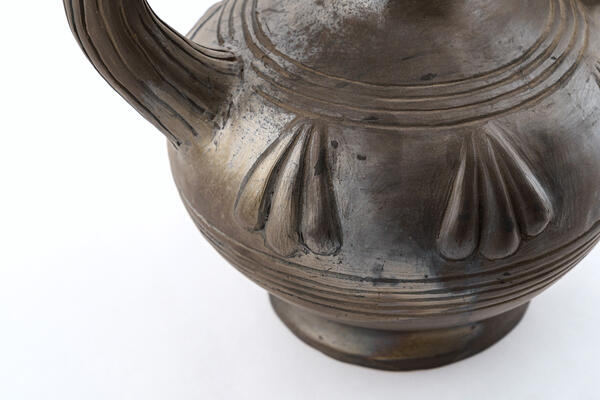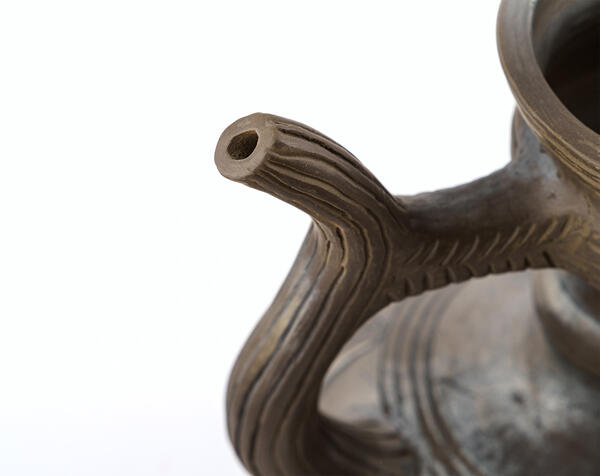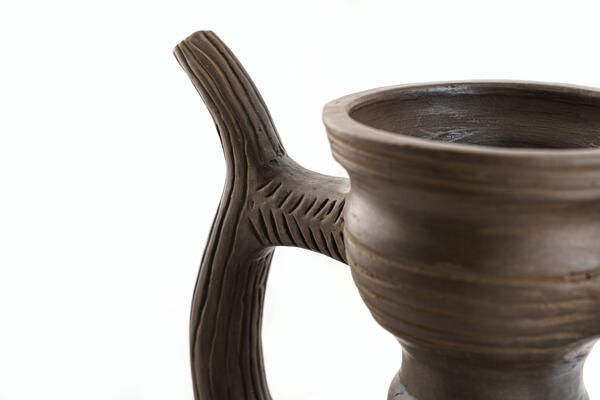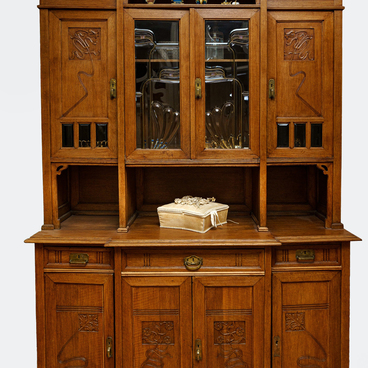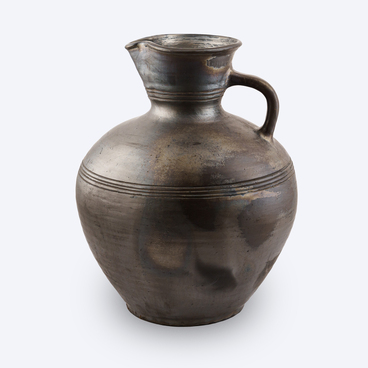The exhibition presents a copy of a vessel of the 17th century. It is a large ceramic vessel of dark gray color with a dim luster on the outer surface. It has a round bottom, a spherical body, a narrow, high neck in the form of an inverted cone of variable diameter (with two thickenings). On one side, the body and the upper part of the neck are connected by a C-shaped handle, on the other side — by a long narrow S-shaped spout. The base of the spout is on the body, its upper part is connected to the neck by a horizontal bridge. The neck and the body at the top and bottom are decorated with belts consisting of horizontal grooves. The spout has longitudinal grooves, and on the bridge connecting the neck and the spout there are short depressed stripes in the form of a “herringbone”. On the body, in its middle part, there are large convex decorative elements in the form of triangular “paws” — three on each side.
A kumgan is a type of jug. People who lived in hot and dusty climates used a kumgan to wash their hands. Depending on their social status, different peoples had different kumgans, ranging from a simple jug to a real work of art. This product is an indispensable household item for Tatar Muslims; it is also used to perform traditional ablutions according to the canons of the Islamic religion. In Russia kumgans began to be used from the 16th–17th centuries. At the same time, their function changed: they became containers for drinks, a kind of prototype of kvass jugs.
The process of making black-glossed items is very complicated and requires serious preparation. The items are made on a potter’s wheel, then the craftsman waits for the clay to partially harden and then proceeds to the next stage — glossing. Glossing is a technique of polishing the clay to a luster without the use of glaze. To achieve the luster, the master has to polish the whole piece or the necessary part with materials at hand: pebbles, small stones, polishing bone, and glass. Products are polished quickly so that the clay does not dry out in the process.
Glossing not only serves a decorative function, but
also allows the clay to become moisture-proof and increases its strength. After
glossing, it took several days for the piece to dry completely. The piece is
then fired in a smoking flame, without access to oxygen.
